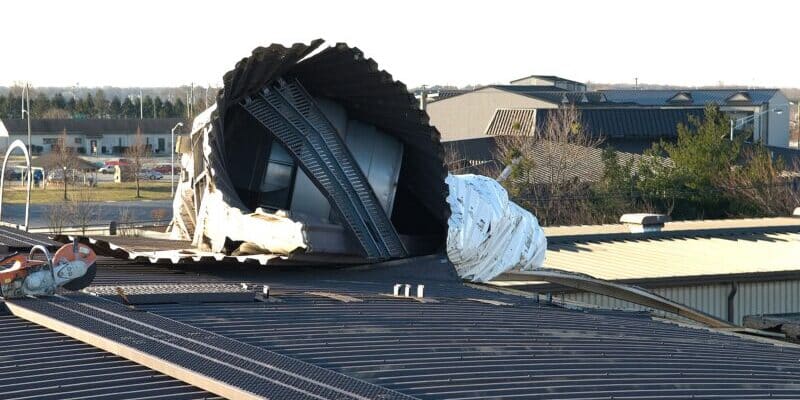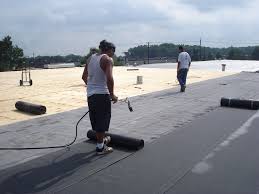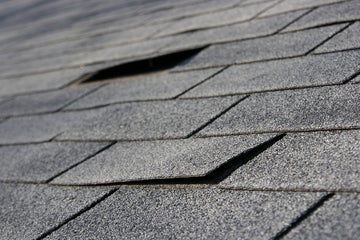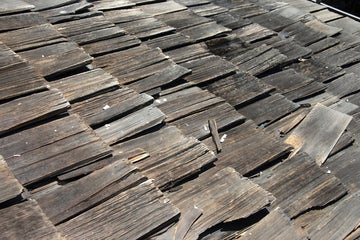
Roof Inspections | ||

Roof Inspection Service is recognized by the roofing industry as a vital component of successful Roof Construction Management. Many vital areas of a roof installation are not visible for inspection upon completion and many times are already covered over before periodic site inspections can be made. Full-time Quality Roof Inspection provides a set of ‘eyes’ during all phases of the installation. Critical areas such as fastening patterns of underlying insulation, mopping techniques, or glue application and drying times can be monitored for compliance with the contract documents and manufacturer’s standards. Count On EMA Trained Roof InspectionsEMA’s roof inspections by PE engineers provide extensive experience to observe all phases of a roof installation to ensure materials are in compliance with project documents. Prior to the start of work, our inspectors are provided specifications, drawings, shop drawings and submittals. The inspector’s attendance at the Pre-Job Conference with respective contractual parties allows a thorough understanding of the system installation, set-up areas and anticipated internal disruptions. The inspector generates Daily Roof Inspection Reports which delineates material and installation compliance, and documents any unforeseen contingent items to the contract. Non-compliance issues are immediately addressed with the roofing contractor, design professional or building owner to ensure proper installation of the specified roofing assembly. The roof and roofing system are checked as part of a Professional Engineer’s roof inspection. The roof keeps rain and other weather elements out of the home or building. The Professional Engineer evaluates the general condition of the roof during roof inspection and estimates the remaining life on the roof. Evidence of past or present roof leakage is also assessed. The engineering report includes an expense analysis of any upcoming roof repair or replacement costs. Most roofs are made of either asphalt, cedar, slate, or clay tile. If a building has a pitched roof, the roof can be viewed from the site. (It is not advisable to climb onto this type of roof during roof inspections as a means of checking it. Climbing on the roof can damage roof shingles, especially older shingles. A leakage problem can be created simply by walking on a pitched roof surface.)
Roof Inspections by Licensed P.EWhen the Professional Engineer finds that a roof leaks, needs repairs, or will soon need replacement, an analysis of the needed repairs and replacement is provided in the roof inspections report. This helps you plan for any upcoming roof replacement. If the building has a pitched roof and an accessible attic, the Professional Engineer looks for evidence of roof leakage or damage to the sheathing. The Professional Engineer also looks for problems in the attic such as the amount of insulation present, water damage, and insufficient attic ventilation. Some roof inspections advocate walking on pitched asphalt, slate, and terracotta tile roofs. There are Inspectors who lift asphalt roof shingles to determine how they were installed. This damages the roof. The slates, cedar shingles, or terracotta tiles suffer damage that can causes leakage. Asphalt roof shingles are self-sealing. Lifting an asphalt roof shingle damages the seal. Roofing manufacturers will void a roof warranty if they determine damage was caused by such a roof inspections on the roof. Our Professional Engineers determine the condition of the roof by visual examination. If an Home Inspector needs to walk on the roof or lift the shingles, you should ask; Why can’t this Home Inspector determine the condition of the roof visually? Can’t this Home Inspector see that the roof shingles are old? In some cases, it is not possible to safely observe the roof before of during a roof inspections. If the roof is not visible, we us available satellite images of the roof to assess the roof inspections. This includes historical satellite images, which can allow the roof history to be determined. How to Inspect Roof TypesThe first protection any house has against the elements is the roof and there are a variety of roofing materials. You can learn a few basics about each material that will help you spot damage that needs to be repaired or roofing that should be replaced as reported in roof inspections. Asphalt Roofing  Asphalt roofing surfaces are granular. When asphalt shingles age they become brittle from the sun and other elements. Then the granules can detach from the shingles. Check in the gutters and at the end of the downspouts for asphalt granule deposits. Inspect the roof for spots that look bare where all the granules have detached and been washed away. Also inspect for missing, torn or warped shingles. When the edges or corners of shingles are rising or curling, they have outlived their usefulness and will need replacing. Also look for indentations or punctures from hail damage. This can be far more costly than simply adding shingles so knowing how many layers are on the roof and the legal limitations can be valuable. You can commonly determine how many layers are present by examining the edge of the roof during roof inspections. Metal Roof Inspections Metal roofs are commonly steel, copper, aluminum, or galvanized iron. Most metal roofs have a life expectancy of about 50 years. Perforations, pits, rust, or corrosion can help determine the age of the roof. Check the seams, corners, and joints for loose, dried out, or peeling caulk or other seam material while performing roof inspections. Slate or Clay Tile Roof Inspections  Roof Inspections of 3 most common tile roof materials and these are concrete tile, clay or terracotta tile, and composite or light weight tiles. The most common tile is made of concrete and you can identify these roofs by the thickness and absence of color on the bottom or underside of the tiles. They often have 75 years or lifetime warranties. However they can leak sooner depending on the quality of workmanship. Local codes and the area of the country will require these tiles be attached with nails, construction adhesives, battens, screws, foam, or a combination of fasteners noted during roof inspections.  Composite tile roof inspections are not as popular and are made to resemble clay tile. They are principally installed on homes that lack the structural ability to hold much heavier concrete. Composite tiles also cost less to install. Clay tile roof inspections comes in two types: terracotta and sand cast. Terracotta tile look just like the material of clay flower pots. Sand cast tiles come in different colors noted during roof inspections. Slate and clay tile roofs and even cement shingles are designed to last as long as the structure when cared for properly. However they can be broken by hail, ice, or by walking on them. Avoid walking on these materials and use a drone or binoculars to look for any missing tiles or ones that are chipped or broken roof inspections. Wooden Shakes or Shingles roof inspections  This is another roofing material you should not be walking on. Inspect these roofs from a ladder, with binoculars or a drone camera. Wooden shakes are split by hand, and wood shingles are sawed and tapered. Weather will deteriorate wood shakes and shingles over time. See if there are missing rotted, warped, or broken shingles or shakes. As a general rule of thumb if a third or more of these roofs are damaged, the whole roof needs replacement. | ||

